Best energy drinks for cycling 2025: fueling and hydration explained
Unsure of the best way to get the energy you need for riding? We take you through the options and our favourite energy drinks
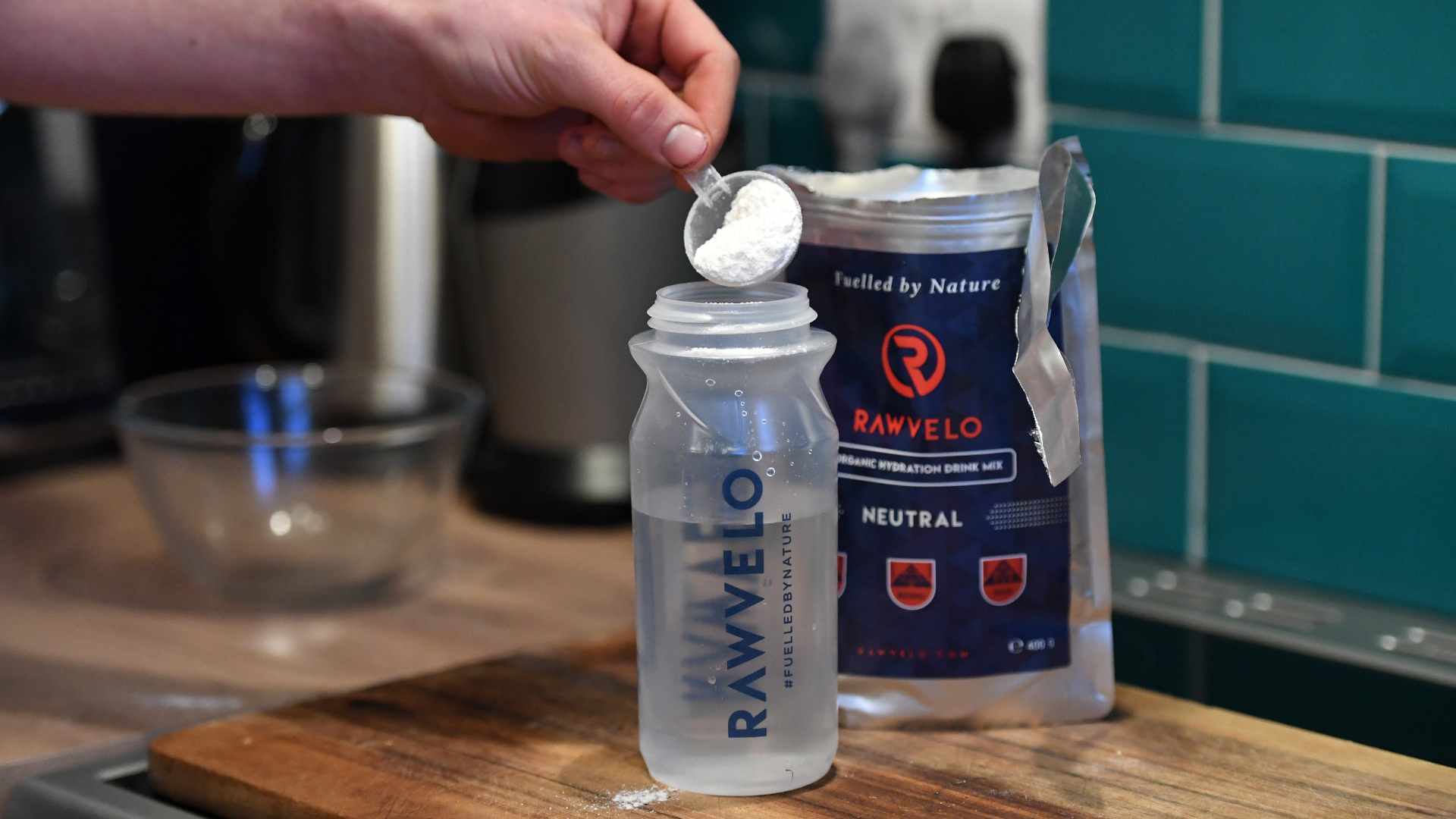
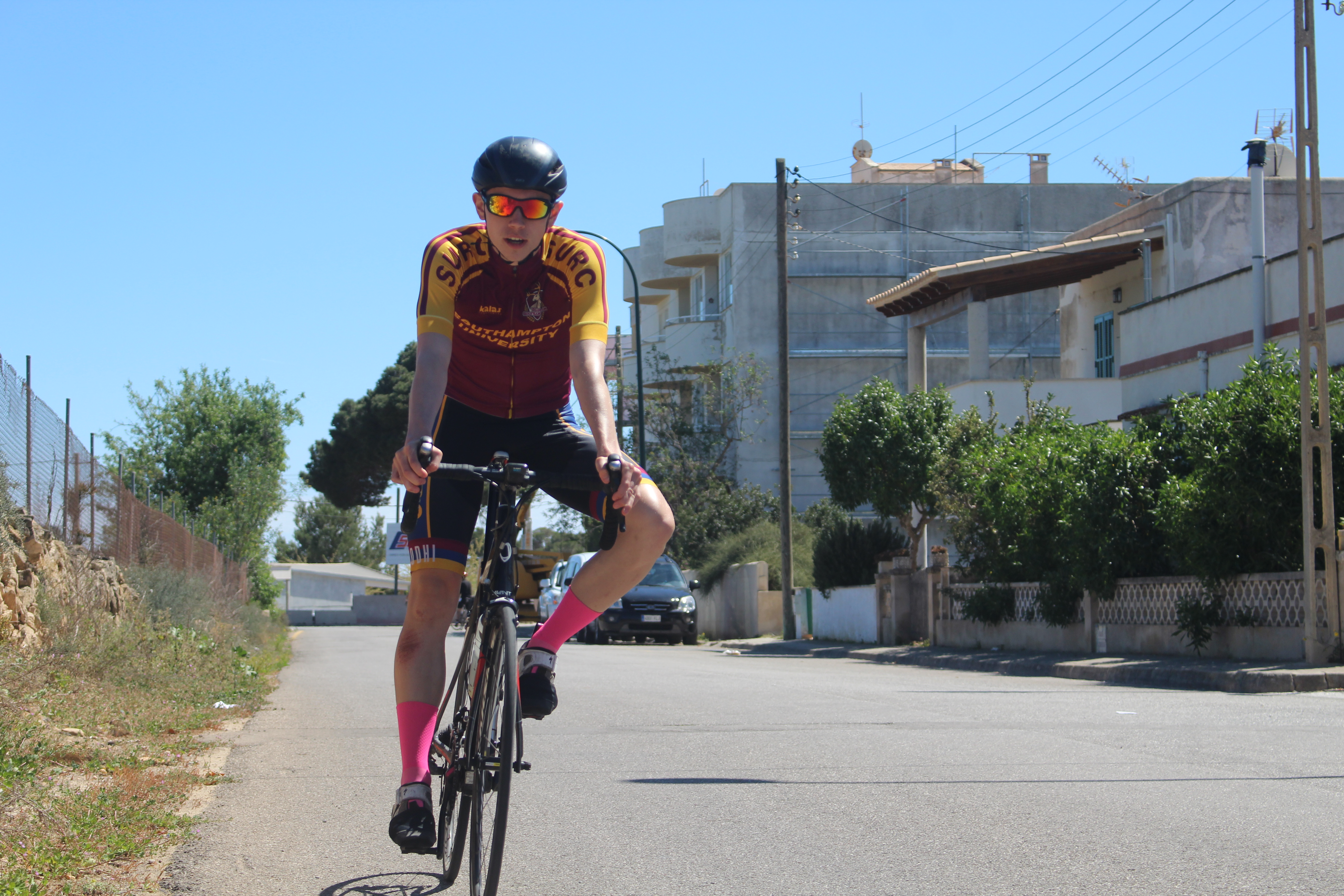
Avoiding the dreaded 'bonk' is one of the key tricks to increasing your enjoyment on the bike. There’s nothing worse than being an hour and a half from home having completely run out of gas.
While pacing is also an important aspect of managing your energy levels, the most fundamental point is ensuring you're consuming the right cycling nutrition.
Multiple studies have shown that keeping your carbohydrate intake up during training can improve recovery – plus continuously snacking through a bike ride does make it more fun!
There are many ways to ensure you get the necessary carbohydrates: the best energy bars are great for longer rides as they tend to be easier on the stomach and the best energy gels are perfect for a quick boost in a race or hard group ride.
But here we're looking at the best energy drinks or – in most cases – the best energy powders you can pop into your water bottles to create an energy drink. Like energy gels, this makes it super quick and easy to take on carbs while pushing the pace.
But they can also be good for all-day epics, ensuring that you are taking on enough carbs and saving you some effort chewing. Believe us, you can get tired of that!
The Quick List
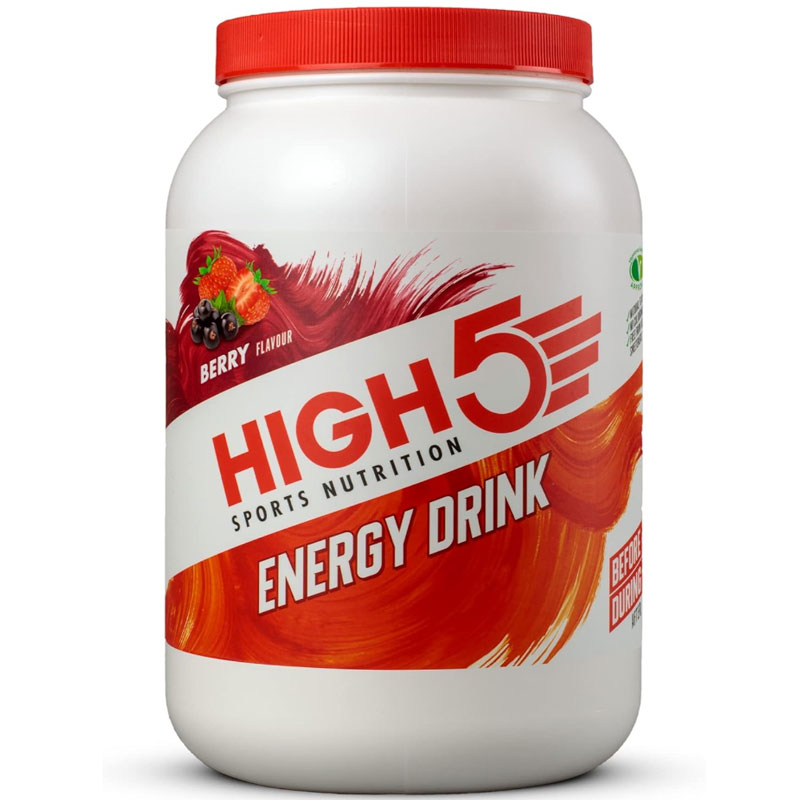
Fantastic value and tasty too
Contains fructose and glucose to help increase absorption. There are a choice of flavours, the taste is highly palatable even during exercise and the cost is very reasonable. Effective and cheap - what's not to like!
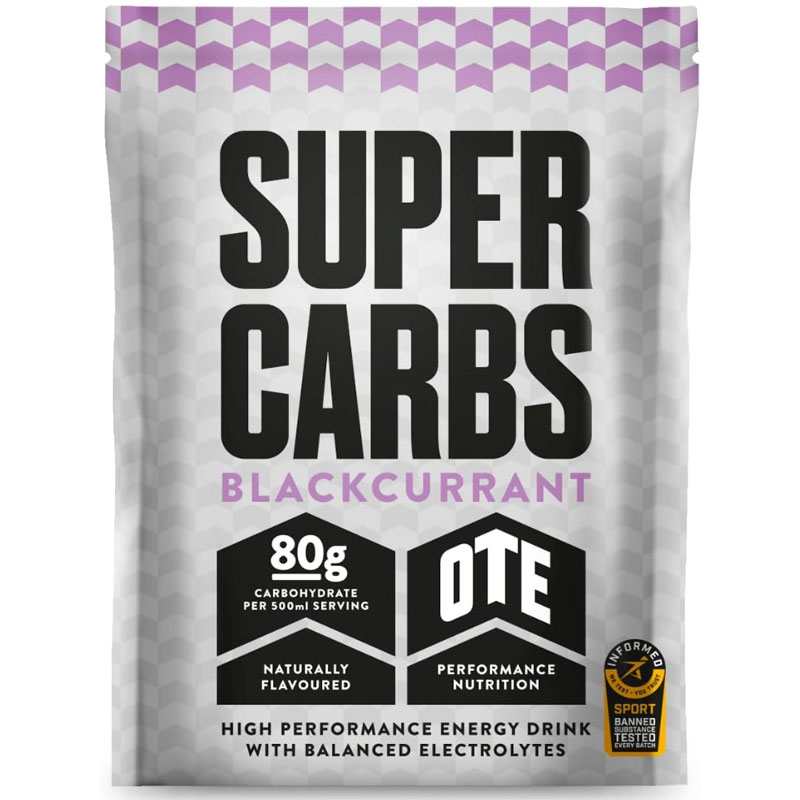
The best for taste – but it is expensive
OTE Super Carbs provides up to 80g of carbohydrates per 500ml but remains easy to ingest with a light and refreshing feel. It's more expensive than some other drinks, but it's a great way to pack in the carbs.
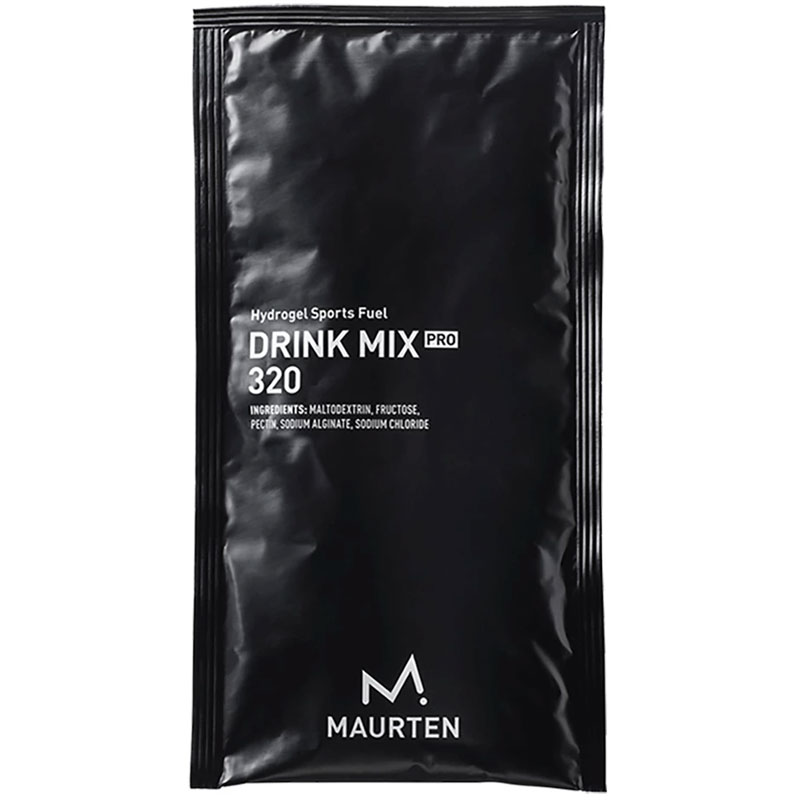
A tasty, pricey option that's easy to drink
Maurten's 320 drink mix worked well on long rides, with 79g of carbs per sachet/bottle. The very mild flavour was a bit of an acquired taste, but it didn't take long to get used to it.
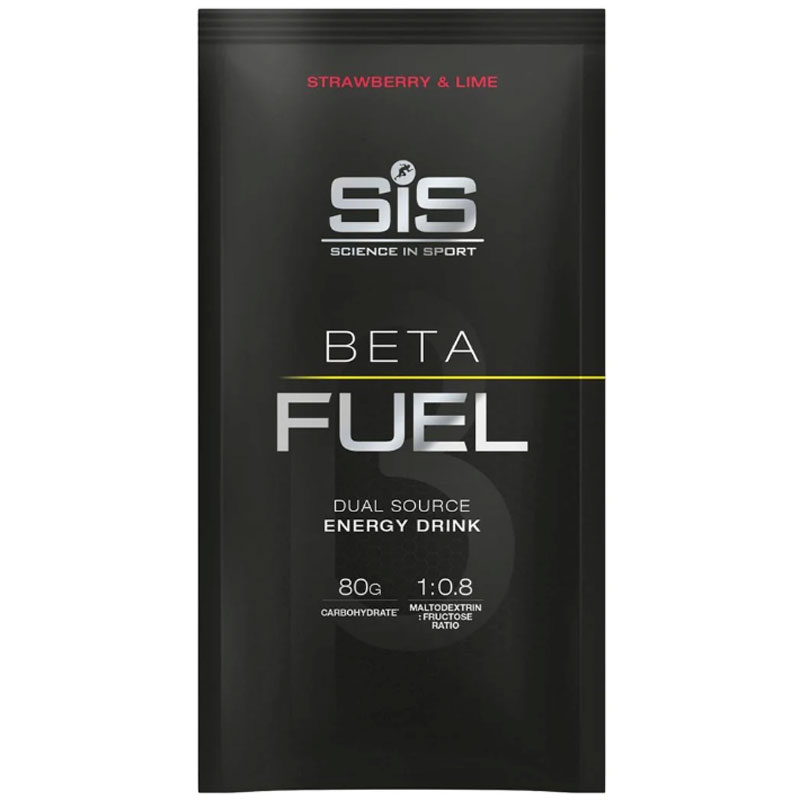
The best Grand Tour stage win
Anything that can power Chris Froome up the Colle delle Finestre at record speed is probably going to be of benefit on a sportive or club run. Mixed well up to about 120g of carbohydrate per 750ml, but was a little on the sweet side, albeit pretty tasty.
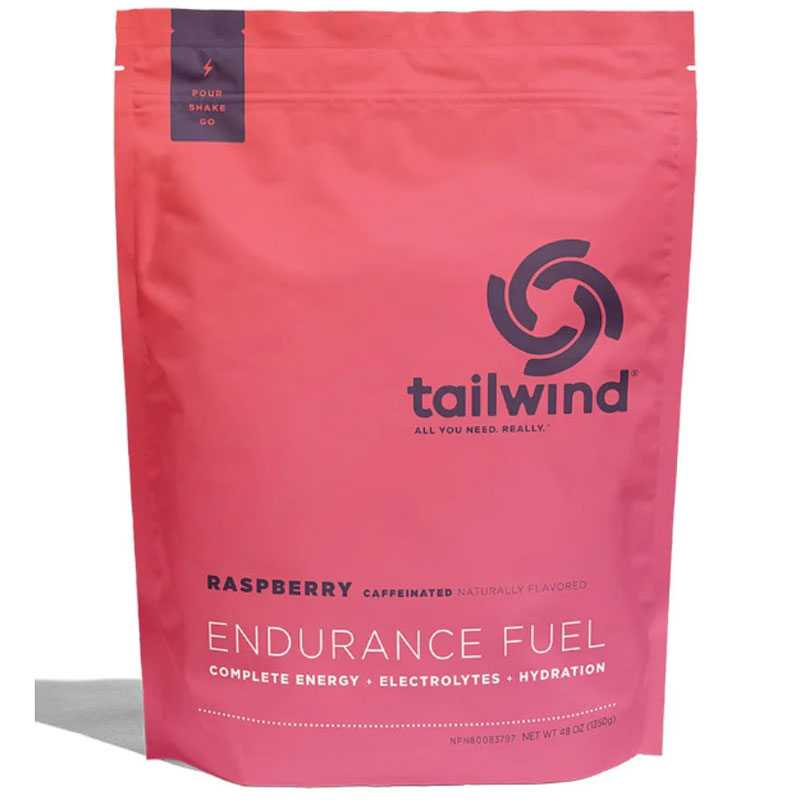
With caffeine
A carbohydrate-electrolyte blend that delivers 100kcal and 25g of carbs per serving, with the added boost of caffeine. Offered in 4 flavours.
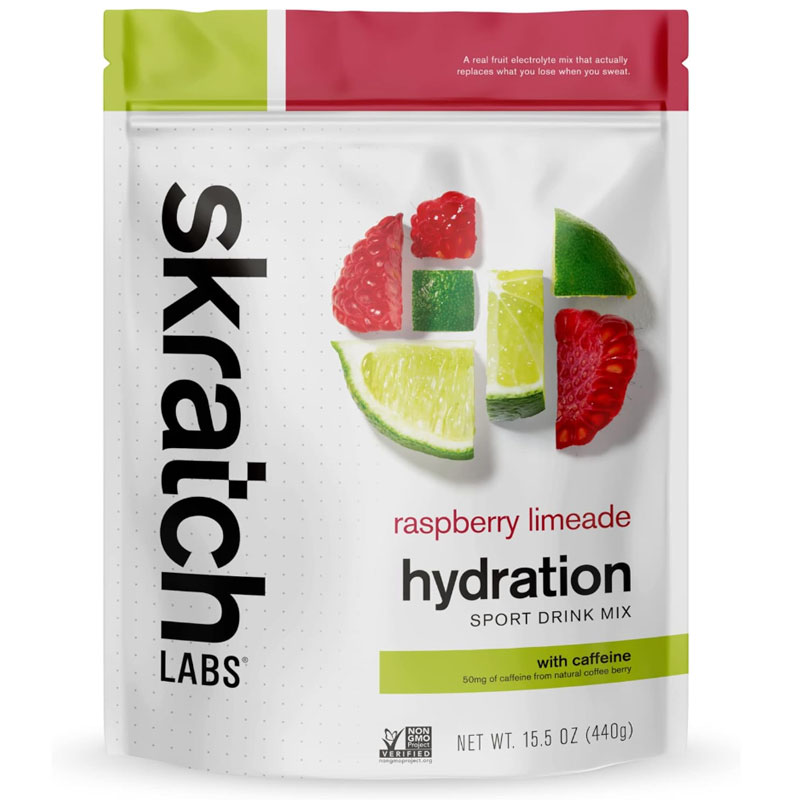
Created with less sugar
If you struggle with the overly sweet taste profile of some sports drinks, the Hydration Mix from Skratch Labs is worth considering. Comes in six flavours.
Best energy drinks for cycling
Best value
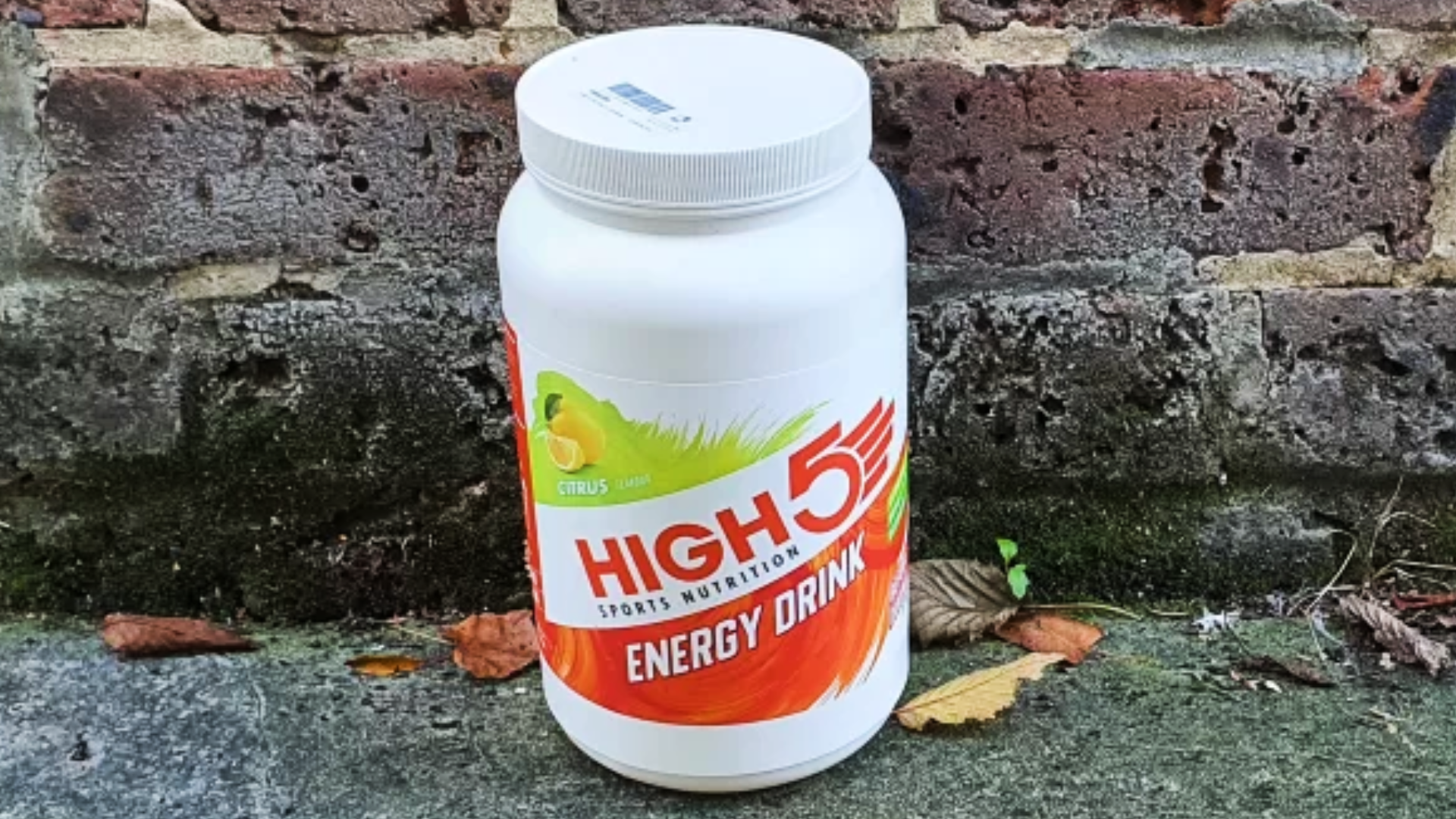
High5 Energy Powder
Our expert review:
Specifications
Reasons to buy
Reasons to avoid
Glucose and fructose are two different types of simple carbohydrates and they each get absorbed into the body in slightly different ways. Now, there is a limit to how many carbs your body is physically able to process in an hour – typically it's about 60 grams.
The key to this energy drink (and a few others) is exploiting the different absorption pathways of glucose and fructose – by essentially splitting the traffic, your body can absorb carbs (up to 90 grams) which is more than if just a single type of carbohydrate were used.
Sure enough, I've been able to take on the full amount without experiencing any stomach issues – even when pushing at high intensity.
It's good value, too. A 2.2kg tub of this stuff will make a $41.70 / £33.99 hole in your finances, meaning that you pay 2.0¢ / 1.6p per gram of carbohydrate – which is quite reasonable.
As a testament to this drink's easiness on the stomach, there was one time that I panic-bought a tub at Decathlon the night before a 100km road race with no feed zone support. As a result, I went way over the recommended serving cramming 132g of carbohydrate into two 750ml bottles, so I had 260g plus a gel for the two-hour race.
With a bit of bad luck, my race only lasted thirty minutes or so. But in that time I managed a third of a bottle and it wasn’t awful. With more reasonable concentrations, the taste and consistency are great.
Best taste
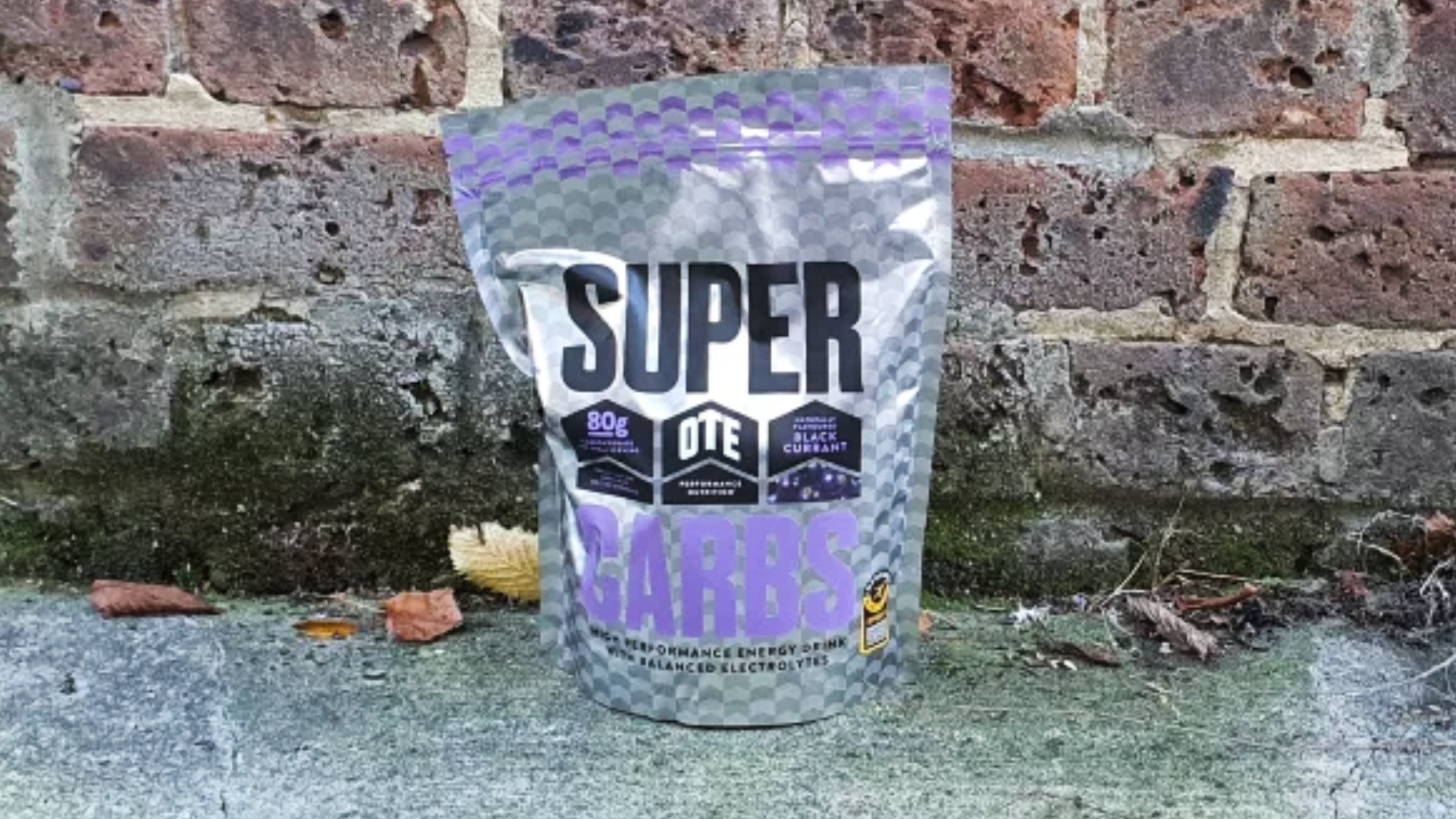
OTE Super Carbs
Our expert review:
Specifications
Reasons to buy
Reasons to avoid
OTE sent both flavours for testing of their flagship ‘Super Carbs’ sports drink. Both flavours were pleasant and the solution felt light and refreshing – not at all syrupy-ish.
The coolest feature of this drink is the amount of carbohydrates crammed in per serving. There’s 80g of per 500ml – excellent for energy density for fast-paced rides, and useful in in the colder months when you don't need to take on quite so much liquid.
If you have two large bottles on your bike that’s enough carbs for around 4 hours of riding in just the bottles, freeing up your pockets for something a bit tastier than a gel.
Priced at $33.00 / £30.00 for a 10-serving pack, this gives a price of 4.4¢ / 3.8p per gram of carbohydrate. If money is no object to you when it comes to sports nutrition, I would get the OTE super carbs - it was the tastiest and easiest to digest large amounts of carbohydrates during training sessions.
In comparison, the High 5 powder was the best value option on test by a considerable margin, priced at 2.0¢ / 1.6p per gram of carbohydrate. On top of this, it was also tasty and easy to digest! The gains of the OTE Super Carbs only felt marginal, so for most people, it probably wouldn't be worth the price – but if you take an uncompromising approach to your nutrition, it certainly is the one to go for.
Easiest to drink
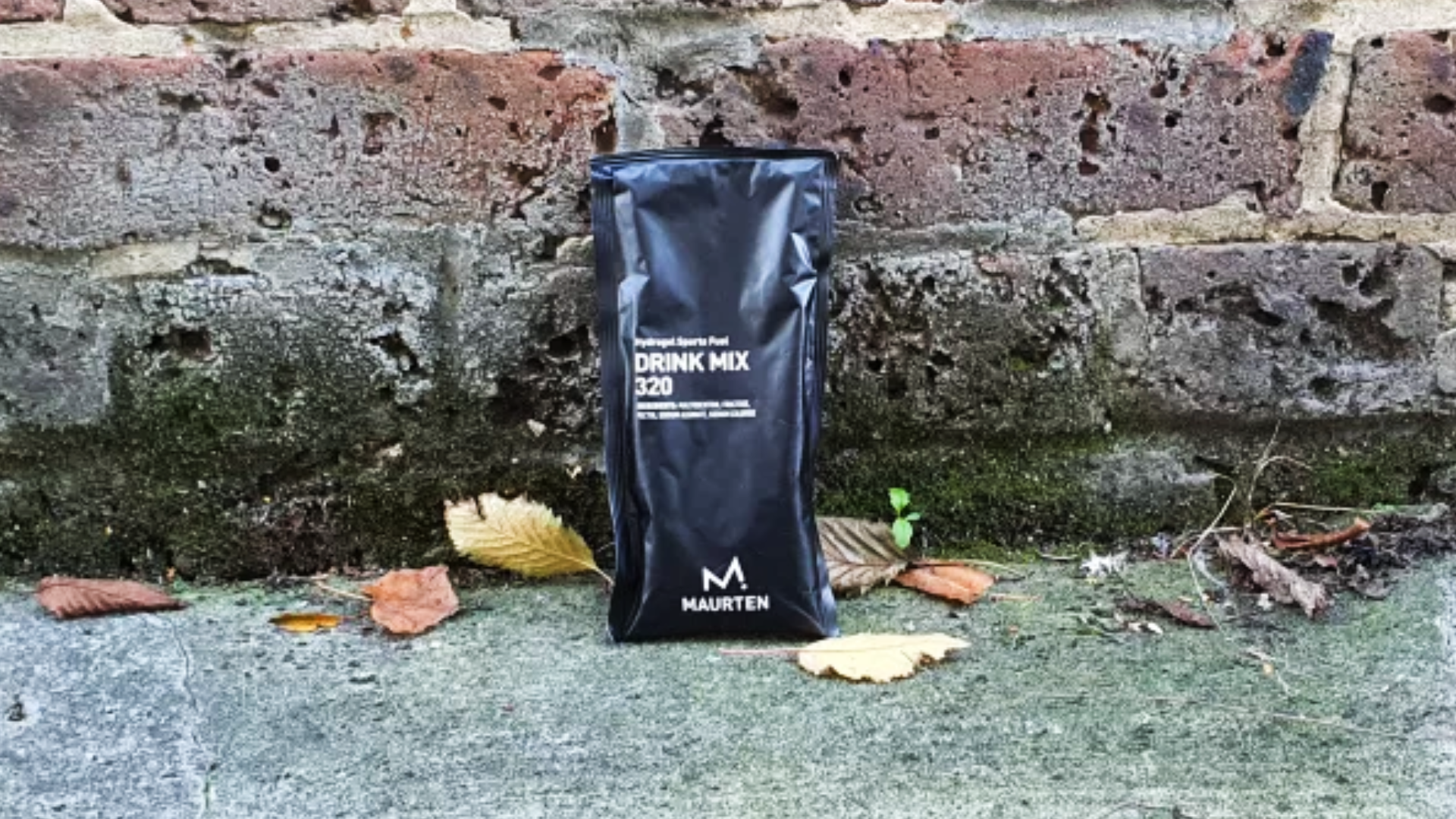
Maurten 320 drink mix
Our expert review:
Specifications
Reasons to buy
Reasons to avoid
This is a product I was really excited to try. Maurten 320 drink mix has long been raved about by athletes in running and triathlon. The brand sponsors a few professional cycling teams and is seen featuring on Alex Dowsett’s YouTube channel regularly.
This product came as a box full of sachets and each of these had 79g of carbohydrate which you can dissolve in a 500ml bottle (so no need to double up). It is possible – if not advised by Maurten – to have 118g of carbohydrate in 500ml of water with this product by splitting 3 sachets across two bottles.
It’s easy to drink, but the taste is acquired. I started off not liking it, but by the end of the box I’d changed my mind – a mildly flavoured nothingness that split opinions amongst my friends. For long rides, the 320 drink mix was perfect, fuelling five hours plus without issue!
A box of 14 sachets will set you back $48.00 / £43.00, giving a price per gram of carbohydrate of 4.3¢ / 3.9p.
Best Grand Tour stage win
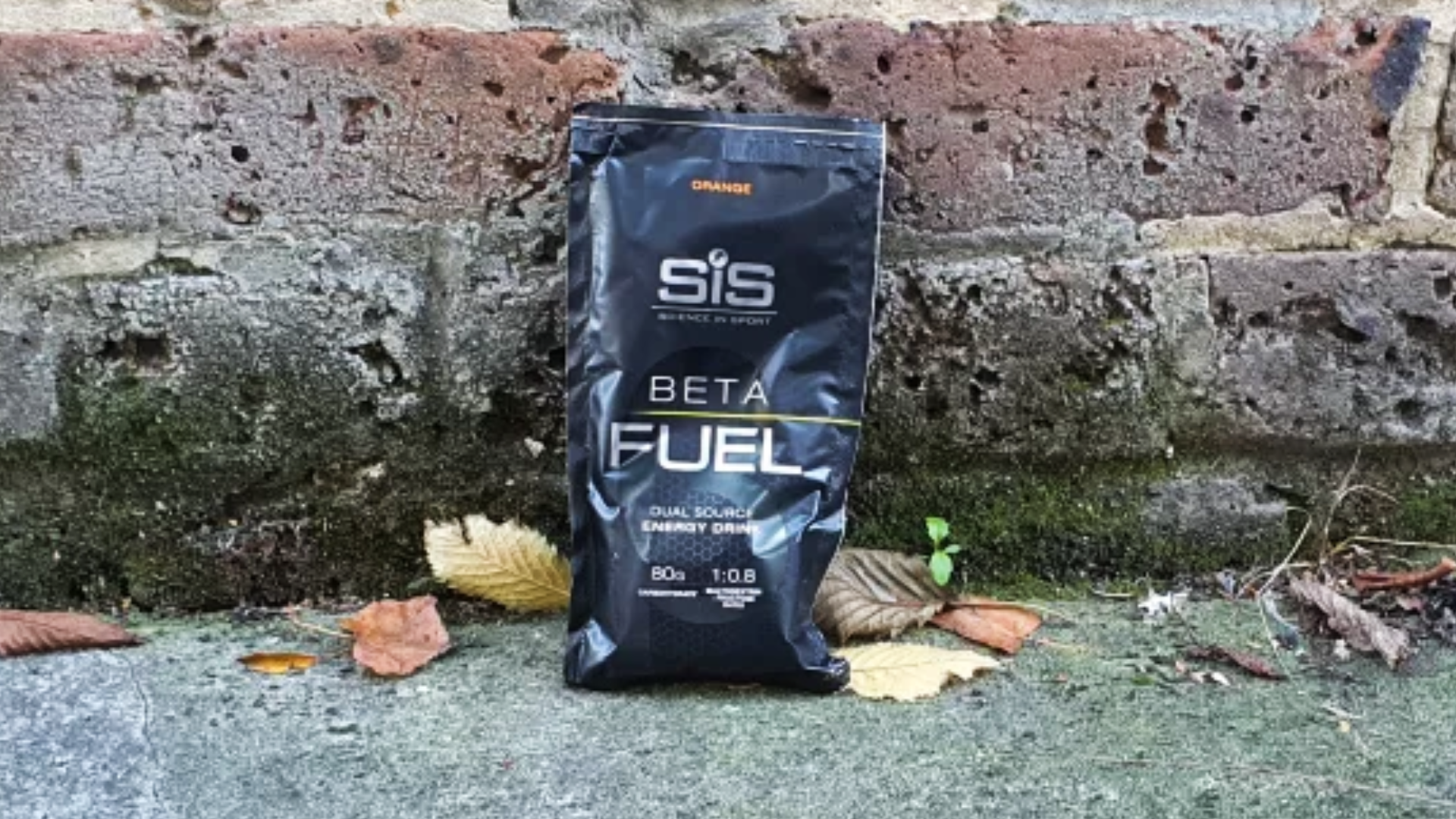
SiS Beta Fuel
Our expert review:
Specifications
Reasons to buy
Reasons to avoid
The product which powered Chris Froome’s epic raid on the Colle delle Finestre was also tasty. Coming in sachets of 80g of carbohydrates, the dosage is easy to calculate (however, there is a lot of packaging).
For racing purposes, you often need more than 160g of carbohydrate in two bottles at any one time, so the ability to add extra mix was important. It’s not always possible, or practical, to get feed zone support.
Beta fuel was fine up to about 120g of carbohydrate per 750ml - at which point the solution got a little syrupy. A box of 15 beta fuel sachets will cost you $45.00 / £37.00 which gives us a price per gram of carbohydrate of 3.8¢ /3.1p
Best with caffeine
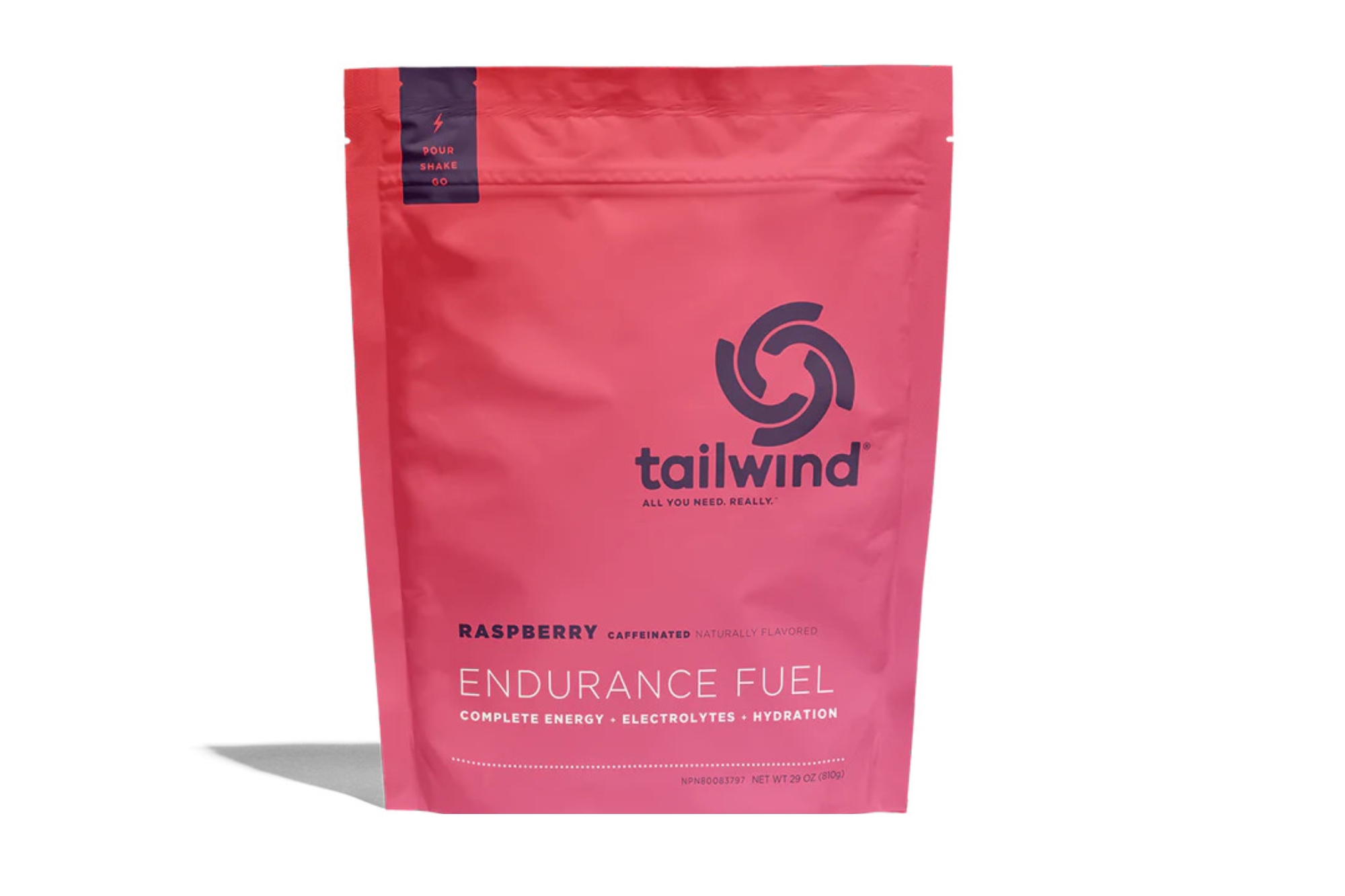
Tailwind Endurance Fuel Caffeinated
Our expert review:
Specifications
Reasons to buy
Reasons to avoid
There has been extensive research on the positive effect of caffeine for cyclists. This doesn’t have to mean chugging a couple of espressos before a ride. There are many sports drinks with added caffeine, including Tailwind’s Endurance Fuel Caffeinated powder.
Mixed with water, each 27g serving delivers 25g of carbs alongside electrolytes - and the extra boost of caffeine. The brand says it can be tailored to meet your calories needs and the ride conditions; for example it suggests using 2-3 scoops per 590-710ml of water per hour for an endurance workout but increasing the amount of water used on hot days. Naturally, if you’re getting your calories from other products too, you’d need to reduce this amount accordingly.
It’s offered in four flavours, all of which are gluten, soy and dairy free. Pouches are available in 50 and 30 serving sizes and there’s also the stick pack option, which features 12 individual sachets, each containing two servings.
Best with less sugar
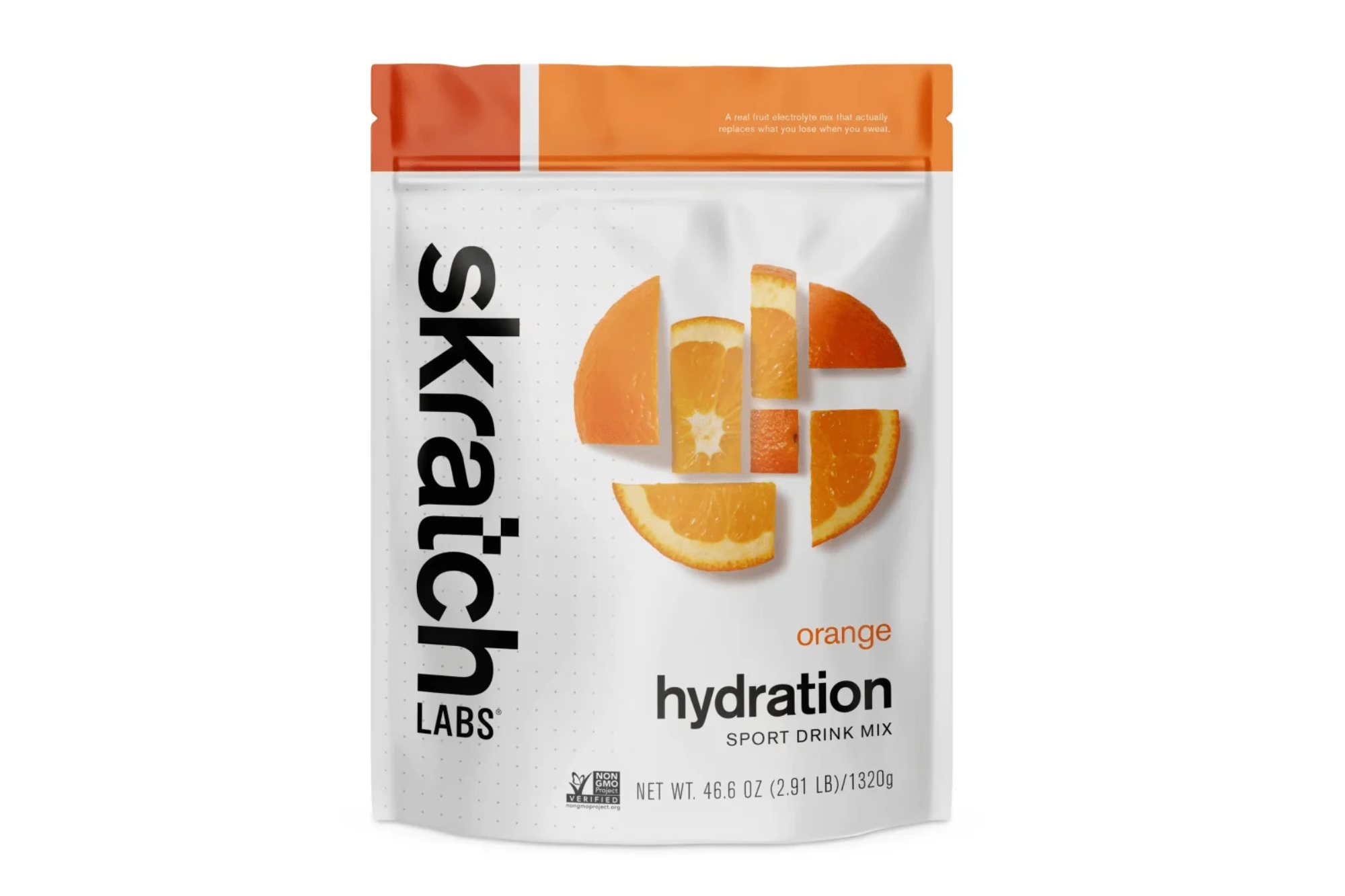
Skratch Labs Sport Hydration Drink Mix
Our expert review:
Specifications
Reasons to buy
Reasons to avoid
Skratch Labs’ Sport Hydration mix is designed to replace electrolytes, deliver an energy boost without overloading you with sugar. The result is a drink that has just 4g of sugar per 100ml, while providing what it says is an electrolytes profile that matches what you lose through sweating - 800 mg sodium, 80 mg potassium, 100 mg calcium, and 80 mg of magnesium per litre.
If you struggle with the overly sweet taste profile of some sports drinks, this offering from Skratch Labs could be for you. It’s offered in six flavours, including lemon and lime, orange and pineapple, all of which are made using real fruit juice. It’s also gluten and dairy free. Using real foods, Skratch Labs says makes for a far more palatable drink, and one less likely to cause any digestion issues.
It’s available as both resealable bags - 20 and 60 servings options - to mix at home before a ride, or in single servings sachets that can be carried and made mid-ride.
Everything you need to know
Carbohydrate energy drinks
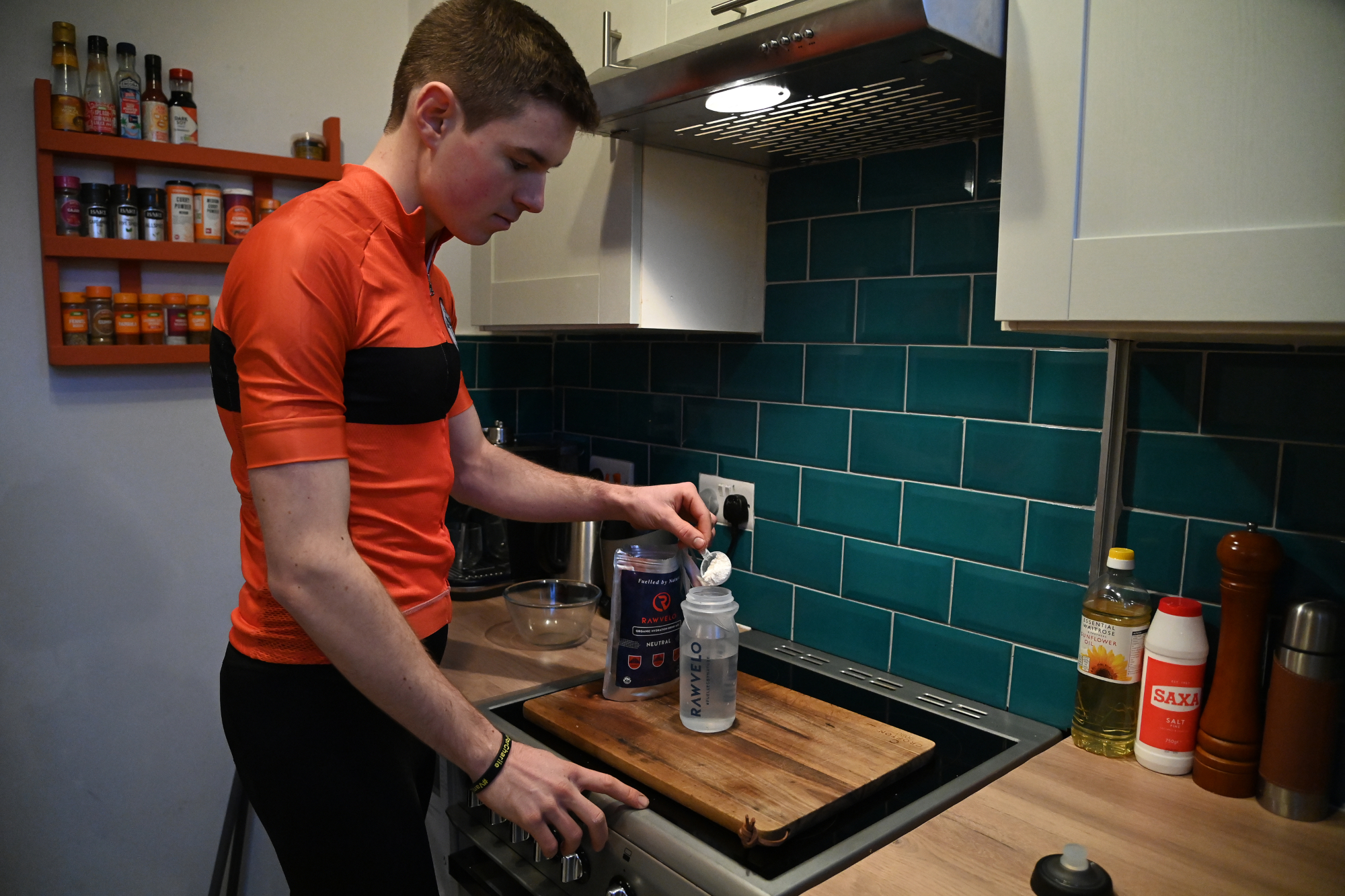
What are carbohydrate energy drinks?
A blend of carbohydrate, water and electrolytes. Most commercially available sports drinks contain a mix of carbohydrates from different sources (eg. sucrose, glucose, fructose) at a concentration of around 6-8%. They typically come as a powder, to be mixed with water.
Why use carbohydrate energy drinks?
As the body’s primary source of fuel during prolonged and high-intensity exercise, depletion of muscle carbohydrates is one of the primary causes of fatigue, and can severely limit your ability to perform on longer rides.
Studies show that consumption of a carbohydrate drink during rides lasting over 60 minutes is an effective way to boost endurance. By providing the working muscles with additional fuel you can delay fatigue, with some research suggesting up to a 20% improvement in performance during exercise lasting 90 minutes or more.
Ingesting carbohydrates during exercise also has positive effects on the central nervous system, which can provide an additional mental ‘boost’.
How do I use carbohydrate energy drinks effectively?
During rides lasting over 60 minutes, consuming 30-60g of carbohydrate per hour will delay fatigue and help you sustain an optimum pace. One litre of an isotonic carbohydrate drink will provide around 60g of carbohydrate – so aim for around 250ml every 15-20 minutes.
Drinks containing a blend of carbohydrates have been shown to boost absorption and increase the amount of carbohydrate that gets to the working muscles (see 2:1 glucose:fructose).
Avoid concentrated drinks containing more than 6-8% carbohydrate (hypertonic), as these slow the rate at which fluid is absorbed, and can also cause gastrointestinal discomfort.
Are carbohydrate energy drinks better than real foods?
Carbohydrate drinks are a convenient option, which have the added bonus of facilitating the replacement of fluid and electrolytes.
However, this isn’t to say it’s not possible to fuel your rides with real food – in a 2012 study from Appalachian State University, bananas were shown to be as effective as a 6% carbohydrate drink in sustaining power output and performance in a group of male cyclists completing a 75km time trial.
Reliance on carb drinks can be an expensive habit. To get around this consider making a DIY isotonic drink by mixing 200ml ordinary squash with 800ml cold water and a pinch of salt.
Whether you use a carb drink is up to you – the key is to develop a plan which allows you to consume the recommended 30-60g of carbohydrate per hour.
What are isotonic drinks?
Electrolyte drinks containing 6-8% carbohydrate are known as isotonic – they contain the same concentration of dissolved particles (salts and sugars) as body fluids, which promotes hydration.
2:1 fructose drinks
What are 2:1 fructose drinks?
An advanced range of sports drinks, powders, bars and gels containing a blend of carbohydrate in a 2:1 ratio of glucose to fructose with added electrolytes.
Why use 2:1 fructose drinks?
Consuming carbohydrate during endurance exercise delays fatigue and boosts performance, but the amount that can actually be delivered to the working muscles is limited by the rate at which it can be absorbed from your digestive tract.
Current recommendations to consume 30-60g of carbohydrate an hour during prolonged exercise are based on research showing that glucose absorption is capped at around one gram per minute (or 60g per hour), with studies showing that higher concentrations are simply not absorbed, and can result in stomach upset.
However, research focusing on the impact of combining different types of carbohydrate has shown that when glucose is consumed with fructose, carbohydrate absorption can exceed 1.5g per minute, increasing the rate of delivery to the muscles to up to 90g per hour. This is thanks to the fact that fructose is transported and absorbed via a different mechanism than glucose.
Put simply, by combining carbohydrates, you can overcome the 60g per hour saturation rule, which increases fuel availability. But does this translate to better performance? Research suggests yes – in a 2004 trial comparing glucose, glucose/fructose or control (water) beverages in trained cyclists; rates of carbohydrate oxidation were 36% higher with the glucose/fructose beverage versus the pure glucose drink.
In addition, researchers found that the glucose/fructose drink spared the body’s stored carbohydrate, improved water uptake from the gut and reduced the rate of perceived exertion. More recently, researchers at Birmingham University simulating a one-hour time trial after two hours of riding found an 8% improvement in performance when using glucose/fructose beverage, compared to a glucose-only drink.
How do I use 2:1 fructose drinks effectively?
For rides lasting over an hour, try swapping your usual sports drink or energy gel for a 2:1 product to increase carbohydrate delivery from 60g to 90g per hour – this equates to 1,500ml of a drink, three gels or three bars.
Remember, any change in your fuelling strategy should be tried and tested, so don’t make the switch on the day of a competition – work towards titrating your usage upwards from the standard 60g per hour.
Bear in mind that to achieve the stated 90g an hour, you'd need to get through two servings - so either a concentrated mix, or two bottles an hour.
Are 2:1 fructose drinks better than real foods?
Multiple transportable carbohydrates have definite benefits which could translate into that all-important performance edge during an event. The advantage of 2:1 products is convenience and the precise ratio of glucose to fructose for maximum absorption.
Carbohydrate foods do contain a mix of sugars (bananas provide glucose and fructose in a 1:1 ratio), so you could experiment with different sources, although getting 90g of carb in the all-important 2:1 ratio will require some maths.
Electrolyte / hydration drinks
What are electrolyte / hydration drinks?
Hydration drinks are a mix of water and electrolytes (such as sodium and potassium) with little or no added carbohydrate, designed to replace the fluid and salts lost during exercise.
Why use electrolyte / hydration drinks?
As core temperature rises during exercise the body compensates by sweating, creating a loss of water and electrolytes, with additional water lost via respiration. Although the body can cope with small changes in fluid volume, large sweat losses can lead to dehydration, which results in impaired performance, increased heart rate, reduced heat tolerance and lower reaction times.
The loss of electrolytes in sweat (primarily sodium) is also exacerbated during prolonged exercise or in hot weather. Failure to replace electrolytes, or dilution through excessive intake of plain water can result in hyponatremia (low levels of sodium) leading to muscle cramps, lethargy, nausea, headaches and in severe cases, death.
Hydration drinks prevent dehydration by replacing fluids and electrolytes. The addition of sodium also facilitates hydration as it stimulates thirst and also water absorption from the intestine, promoting fluid retention. Due to the dilution of electrolytes, plain water may also suppress thirst, while hydration drinks maintain a desire to drink.
How do I use electrolyte / hydration drinks effectively?
Generally speaking, a specific hydration product isn’t necessary if you’re riding for under an hour, but it can be useful in maintaining hydration in hot conditions, or if sweat loss is high.
If you do choose one, the rule of thumb is to start your ride well-hydrated, and to adopt a regular pattern of drink intake, aiming for 125ml every 15 minutes. This will help to maintain fluid balance.
Remember that if you’re riding for over an hour, you’ll also need to take carbohydrates on board, as hydration drinks don’t contain enough carbohydrates to boost endurance.
Are they better than real foods?
Flavoured beverages increase your desire to drink, and fluid consumption is more closely matched to sweat loss when athletes are offered a flavoured drink over plain water during exercise. In hot and humid conditions they’re an effective way to maintain adequate hydration, although during longer rides you’ll need to consider a carbohydrate source.
On the downside, these drinks can be expensive, and in rides lasting under an hour in relatively cool conditions, good old water will do the job nicely. If you’re not a fan of plain water, you can add a bit of squash and a pinch of salt to your water bottle to increase motivation to drink.
How we test
The testing protocol for these energy drinks was quite straightforward in that I used each of them regularly to fuel my training rides – which spanned shorter, high-intensity interval sessions all the way up to five hour plus rides. As a big part of carbohydrate absorption is your gut being familiar with the particular mix, it means it’s difficult to make a judgement straight away.
The drinks were judged on their taste, as well as how well the mixtures do when you deviate from the recommended concentrations – because many race and event situations can end up demanding this.
The value of an energy drink comes from how many grams of carbohydrate you get per money spent. This is calculated for each product.
Get The Leadout Newsletter
The latest race content, interviews, features, reviews and expert buying guides, direct to your inbox!

Tom Epton is a freelance writer and data scientist. Originally training as a scientist after completing his studies in physics he realised that cycling was what he wanted to spend his life thinking about. Now he works with manufacturers, athletes and teams using cutting edge data science methods to find performance gains. Tom writes primarily about sport-science and tech!
-
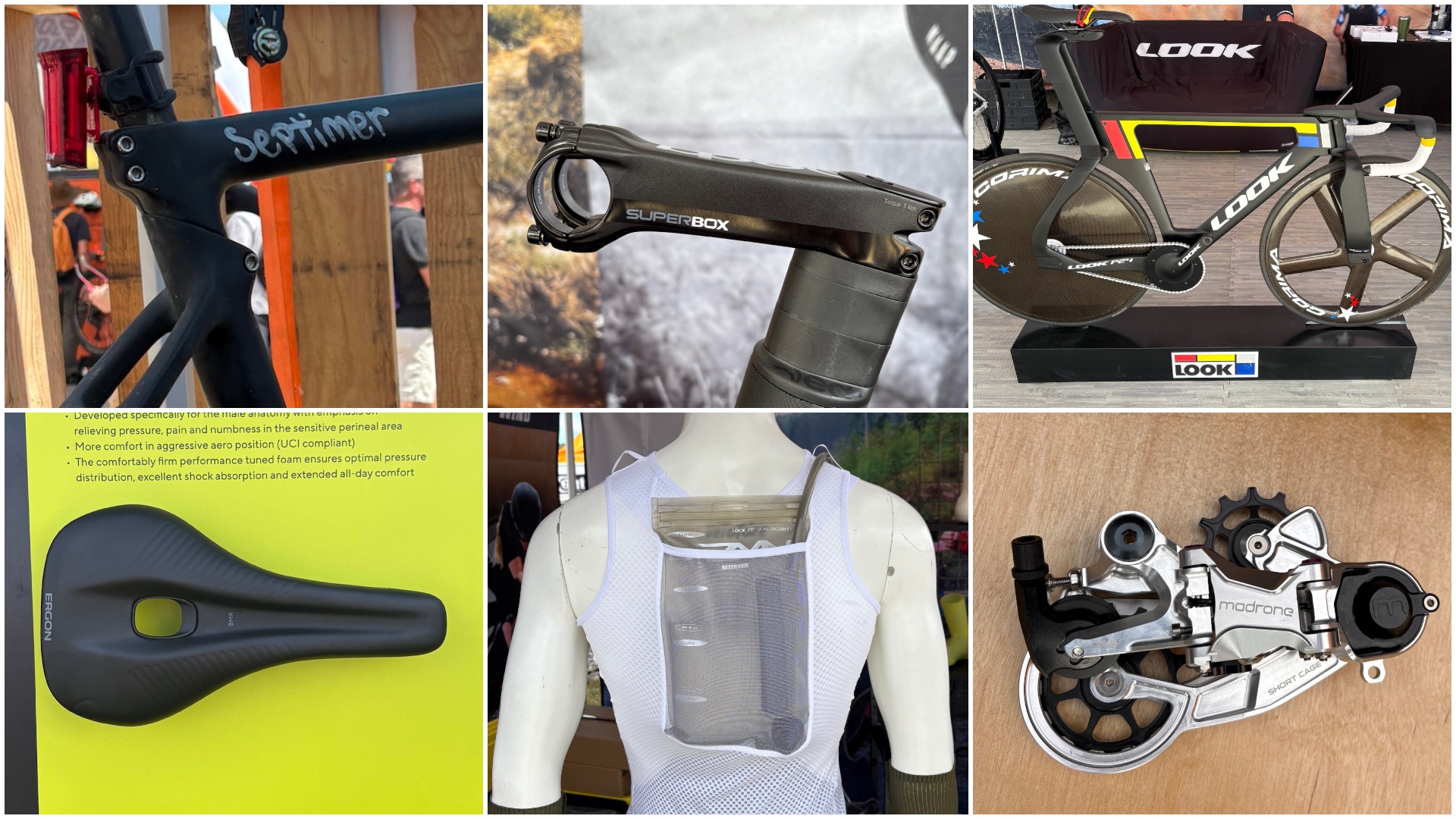 The Sea Otter Classic: sights and sounds from the biggest bike gathering in North America - Part 1
The Sea Otter Classic: sights and sounds from the biggest bike gathering in North America - Part 1Odds and ends that run the gamut, from a $13,000 frameset to armoured kit and new hydro-vests
By Tyler Boucher Published
-
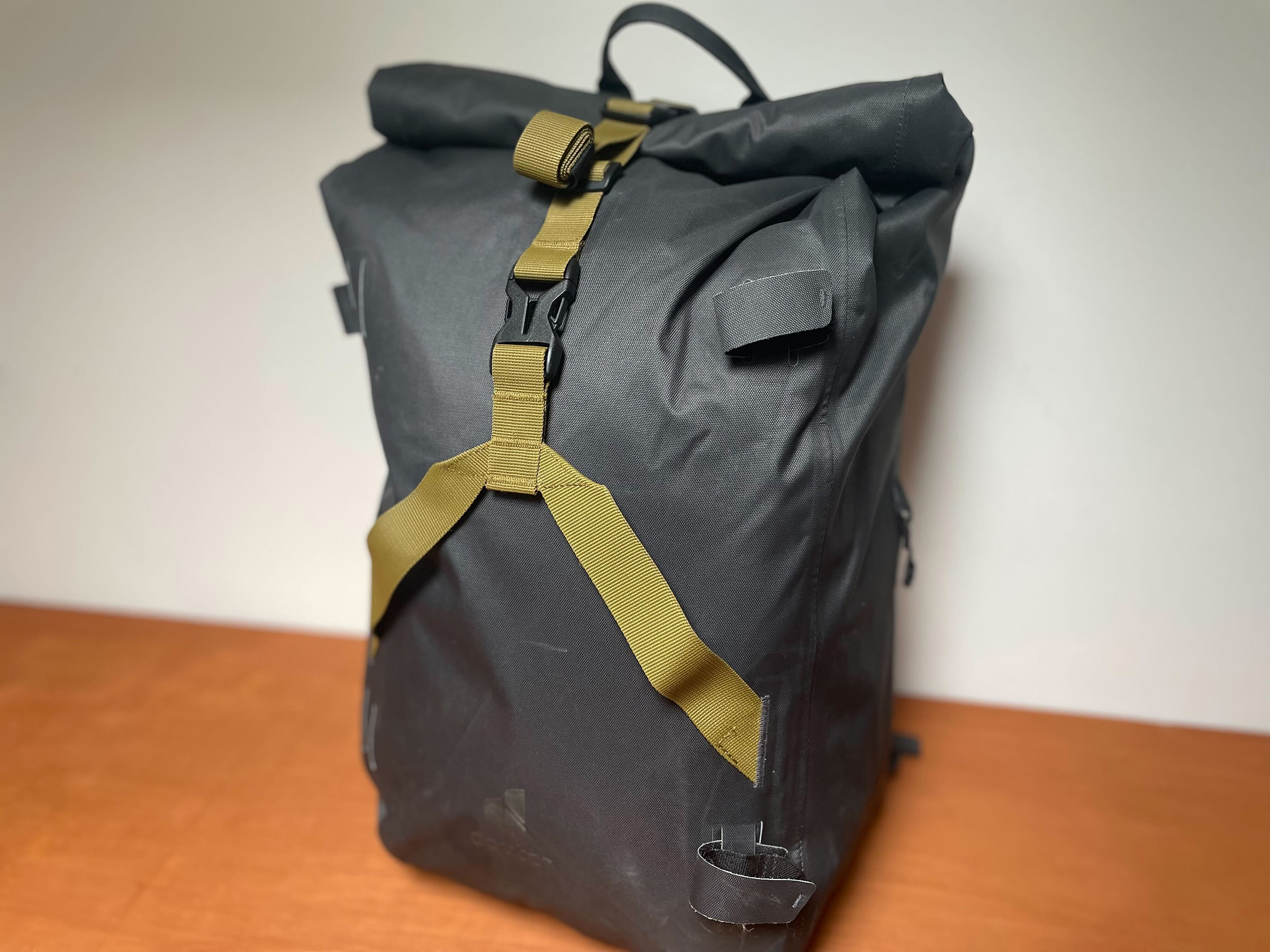 Deuter's 30ltr commuter backpack
Deuter's 30ltr commuter backpackA rolltop bag to fit a change of clothes and a sandwich. And keep them dry
By Simon Richardson Published
-
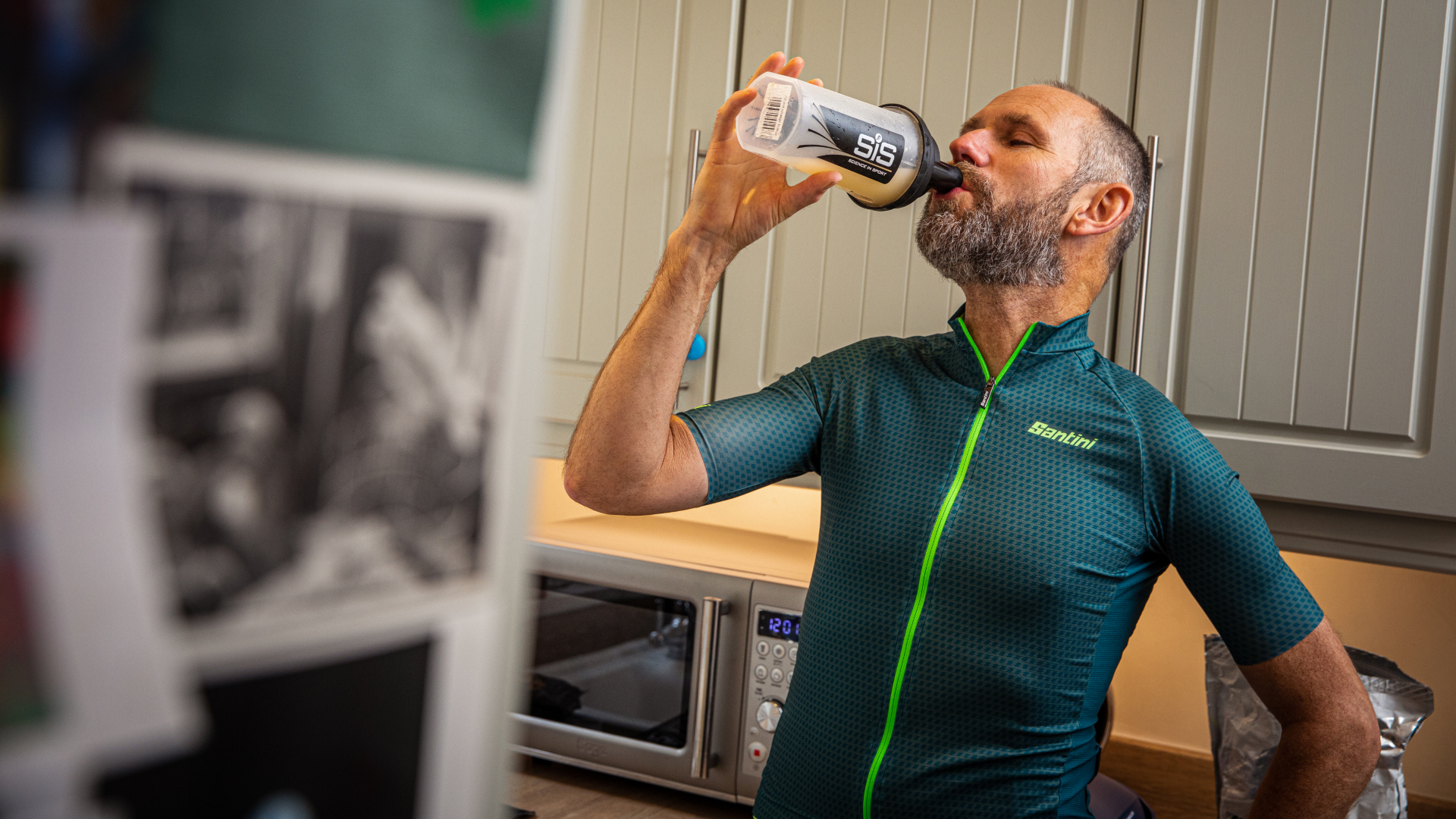 Best recovery drinks for cycling 2025 rated and reviewed
Best recovery drinks for cycling 2025 rated and reviewedWe look at the best available protein and recovery drinks to ensure you’re recovered and good to go for your next training session
By Andy Turner Last updated
-
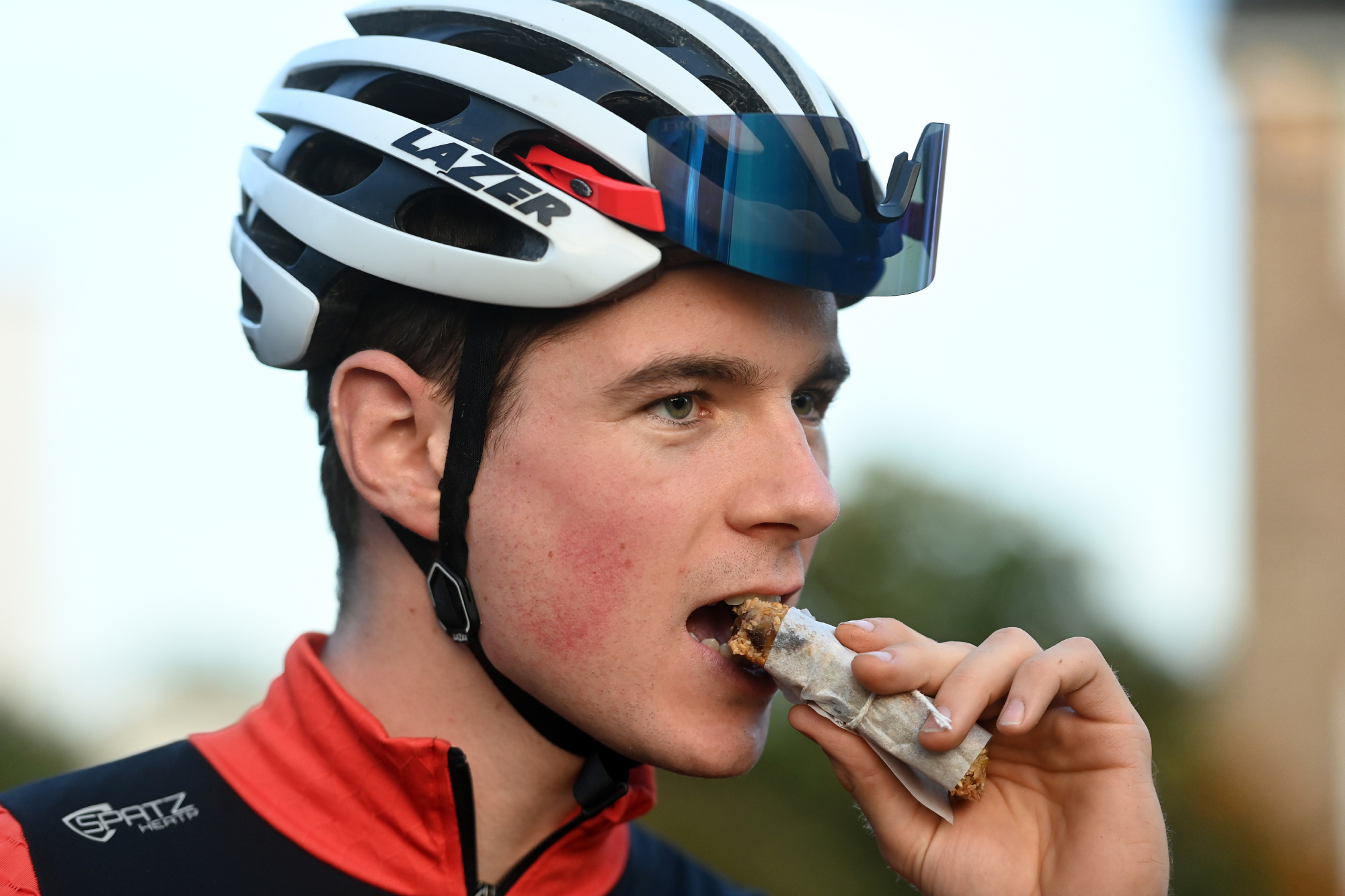 Energy bars for cycling 2025: comprehensively taste tested and rated
Energy bars for cycling 2025: comprehensively taste tested and ratedEnergy bars for cycling will keep you riding for longer - they even taste great, too
By Paul Norman Last updated
-
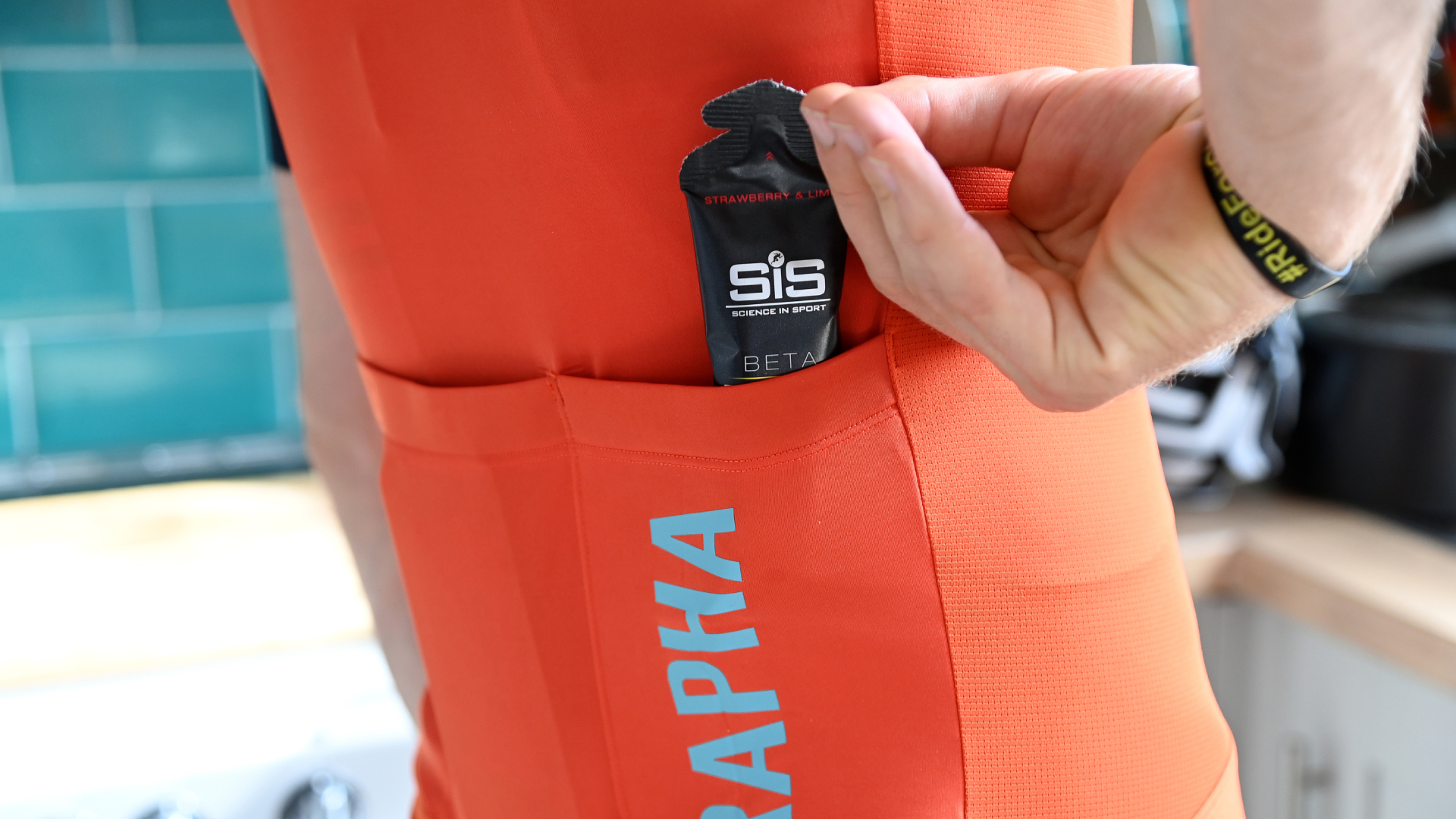 The best energy gels for cycling 2025: what to look for and our favourites
The best energy gels for cycling 2025: what to look for and our favouritesThere's no doubting the benefit of downing a quick energy gel at vital points of a ride or race. Here's our guide on what to look for, as well as a few of our favorites
By Paul Norman Last updated